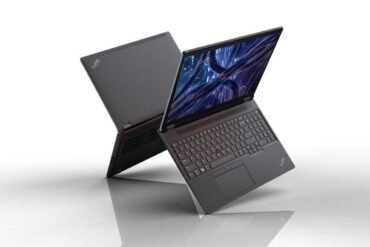The Role of Power On Self Test (POST) in Booting
Table of Contents
Introduction to POST: Understanding the Basics
When it comes to booting up a computer, one crucial process that takes place is the Power On Self Test (POST). This critical diagnostic test plays a significant role in ensuring the proper functioning of the computer’s hardware components before the operating system takes over.
During the POST, the computer’s firmware, which is stored in the motherboard’s Read-Only Memory (ROM), initiates a series of tests to check if all the essential hardware components are functional. These components include the processor, memory (RAM), hard drives, graphics card, keyboard, and other peripherals.
The primary purpose of the POST is to detect any potential hardware issues or errors that may prevent the computer from booting up correctly. If the test identifies any problems, it will alert the user through a series of audio or visual signals, such as beeps or error codes, indicating the specific component causing the issue.
Here are some key points to understand about the POST process:
- The POST is a low-level diagnostic procedure that occurs before the operating system loads.
- It ensures that all hardware components are in working condition.
- If any issues are detected, the POST notifies the user through error codes or beeps.
- The POST can be accessed by pressing a specific key combination during the boot process, such as Del or F2.
- It is crucial to resolve any detected hardware problems before proceeding with the booting process to avoid further damage.
In conclusion, the Power On Self Test (POST) is an essential part of the computer booting process. It helps in identifying any hardware issues that may hinder the proper functioning of the computer. By understanding the basics of POST, users can troubleshoot and resolve hardware problems effectively, ensuring a smooth boot-up experience.
Importance of POST in Booting
Power On Self Test (POST) is a crucial part of the booting process for any computer system. It is a series of diagnostic tests that are performed by the system’s firmware or BIOS (Basic Input/Output System) to ensure that all the hardware components are functioning correctly before the operating system starts loading. The POST is typically initiated immediately after the power is turned on or the system is reset.
The POST plays a vital role in ensuring the stability and reliability of the computer system. Here are some reasons why the POST is important:
- Detecting Hardware Issues: The primary purpose of the POST is to detect any hardware issues that may prevent the computer system from functioning properly. It checks various components such as the CPU, memory, graphics card, hard drives, and other peripherals to ensure they are all functioning correctly. If any issues are detected, the POST will display error codes or beep patterns to indicate the problematic component.
- Preventing System Failures: By detecting hardware issues early on, the POST helps prevent system failures and unexpected crashes. It allows users to address the problem before the operating system loads, minimizing the risk of data loss or further damage to the hardware.
- Ensuring Compatibility: The POST also verifies the compatibility of the hardware components with the firmware and BIOS. It checks if the installed hardware is supported by the system and whether any firmware or BIOS updates are required for optimal performance.
- Improving Troubleshooting: In case of any hardware failures, the error codes or beep patterns generated by the POST provide valuable information for troubleshooting. They help technicians identify the specific component causing the issue, making the repair process more efficient and cost-effective.
- Enhancing System Security: The POST also contributes to system security by checking for potential hardware tampering or unauthorized modifications. It ensures that the system is running with the original, trusted hardware configuration.
In conclusion, the POST is an essential part of the booting process as it detects hardware issues, prevents system failures, ensures compatibility, improves troubleshooting, and enhances system security. It is a critical step that ensures the overall stability and reliability of the computer system.
Troubleshooting POST Errors
While the Power On Self Test (POST) is an essential part of the booting process, it can sometimes encounter errors that prevent your computer from starting up properly. Understanding how to troubleshoot these POST errors can help you identify and resolve any issues that may arise.
Here are some common troubleshooting steps you can take:
- Check hardware connections: Ensure that all hardware components, such as the RAM, graphics card, and hard drive, are properly connected. Loose connections can cause POST errors.
- Remove non-essential components: Disconnect any non-essential devices, such as printers or external hard drives, and try booting the system again. Sometimes, conflicts between devices can cause POST errors.
- Reset BIOS settings: If you recently made changes to the BIOS settings, it’s possible that incorrect configurations are causing the POST errors. Resetting the BIOS to its default settings can help resolve this issue.
- Test hardware components: Use diagnostic tools to test individual hardware components, such as the RAM or hard drive, for any potential failures. Faulty hardware can trigger POST errors.
- Update firmware: Check for firmware updates for your motherboard or other hardware components. Outdated firmware can sometimes result in POST errors.
- Consult manufacturer documentation: If you’re still experiencing POST errors, consult the documentation provided by the manufacturer of your computer or motherboard. They may have specific troubleshooting steps or firmware updates to address known issues.
By following these troubleshooting steps, you can effectively identify and resolve POST errors, ensuring a smooth booting process for your computer.
Enhancing Booting Performance Through POST
Power On Self Test (POST) is a crucial component of the booting process that checks the system’s hardware and ensures its proper functioning. By optimizing the POST phase, you can significantly enhance the booting performance of your computer. Here are some strategies to improve the efficiency of POST:
- Update BIOS: Keeping your system’s BIOS up to date is essential for optimal performance. Manufacturers often release BIOS updates that contain bug fixes and improvements, including enhancements to the POST process. Regularly check your computer manufacturer’s website for the latest BIOS updates and install them accordingly.
- Disable unnecessary hardware checks: POST performs checks on various hardware components, such as RAM, CPU, and graphics card. However, certain checks may not be necessary for your system. Enter your system’s BIOS settings and disable any hardware checks that are not vital for your specific configuration. This can help reduce the boot time considerably.
- Remove unnecessary peripherals: Disconnect any unnecessary external devices, such as printers, scanners, or USB drives, during the boot process. These peripherals can sometimes cause delays during POST as the system tries to detect and initialize them. By removing them temporarily, you can speed up the POST phase.
- Enable quick boot: Many modern motherboards offer a “Quick Boot” or “Fast Boot” option in the BIOS settings. Enabling this feature skips certain checks during POST, resulting in a faster boot time. However, be cautious when using this option, as it may cause compatibility issues with certain hardware configurations.
- Optimize hardware configuration: Ensure that your hardware components are properly installed and connected. Loose connections or faulty hardware can cause delays during POST. Double-check all connections, including cables and memory modules, to ensure they are secure and functioning correctly.
By implementing these strategies, you can enhance the booting performance of your system by optimizing the POST phase. Remember to always exercise caution when making changes to your system’s BIOS settings and seek professional assistance if needed.
The Future of POST in Booting
The Power On Self Test (POST) has long been an integral part of the booting process for computers. It is a diagnostic procedure that checks the hardware components of a computer system to ensure they are functioning properly before the operating system is loaded. However, with advancements in technology and the emergence of new booting methods, the future of POST is being questioned.
One of the main challenges with POST is its time-consuming nature. The test can take several seconds to complete, which can be frustrating for users who want their computer to boot up quickly. As a result, there is a growing demand for faster booting times, and this has led to the development of alternative booting methods that bypass or minimize the use of POST.
One such method is called Fast Boot, which is designed to reduce the time it takes for a computer to start up. Fast Boot achieves this by skipping or abbreviating the POST process. Instead of performing a comprehensive hardware check, it only checks the essential components needed for booting. This allows the computer to start up much faster, but it also means that some hardware issues may go undetected.
Another emerging trend is the use of Unified Extensible Firmware Interface (UEFI) instead of the traditional BIOS (Basic Input/Output System). UEFI is a more advanced firmware interface that offers several advantages over BIOS, including faster booting times and improved security features. UEFI also introduces a new booting method called Secure Boot, which verifies the integrity of the operating system during the booting process. This helps to prevent malware from loading before the operating system, enhancing system security.
Despite these alternatives, it is unlikely that POST will disappear entirely in the near future. While its role may be diminished, it still serves an important purpose in ensuring that the hardware components of a computer are functioning properly. Additionally, POST can be useful for troubleshooting hardware issues and diagnosing problems during the booting process.
In conclusion, the future of POST in booting is likely to involve a combination of traditional POST, alternative booting methods, and new technologies such as UEFI. As technology continues to evolve, the emphasis will be on faster booting times and improved system security, but the need for hardware diagnostics and troubleshooting will remain.



























